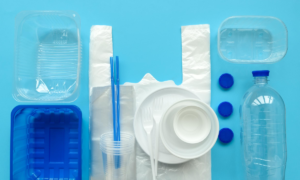- Research & Studies
- National
- International
Alberta researchers begin studying microplastics
Every river in the world is now a collector for microplastics, the tiny fragments that can be found from the deepest ocean floors to the tops of mountain peaks. But studying microplastics in Canadian rivers is a relatively new field.
Now a team of researchers from the Northern Alberta Institute of Technology has embarked on one of the first-ever studies of microplastics in Western Canada, and is sampling the water and sediments in the North Saskatchewan River in and around Edmonton. The team will create a baseline measurement of microplastics in one of the Canadian prairie’s most important freshwater ecosystems, but also is aiming to advance the science of measuring and identifying plastic pollution in rivers – a crucial step for scientists around the world to predict what will eventually end up in lakes and oceans.
Microplastics – pieces of plastic equal less than five millimetres in length, and often much smaller to the point of invisibility – come off clothing and other synthetic materials, or larger plastic objects as they break down.
“By now we know that if you dig for long enough, along a river anywhere, you’re bound to find microplastics,” said project lead Paolo Mussone, a chemical engineer who holds the Applied Bio/Nanotechnology Industrial Research chair at NAIT.
Dr. Mussone said while its now widely understood there are microplastics almost everywhere, there are no standardized methods of extracting them from freshwater sediments. That leaves gaps in the understanding of the prevalence of mircoplastics in freshwater bodies, and the effects on the environment.
The challenge now, he said, is to develop methods to count and categorize types of microplastic pollution, and to be able compare those results across jurisdictions – so that problem areas can be identified and solutions can be found.
The study began this past April and will go to 2023. Dozens of freshwater and sediment samples from locations along the North Saskatchewan River have already been taken. Dr. Mussone said Edmonton is well suited to be the site of a microplastics study, as it’s a large urban centre with a metro population of 1.3 million, with a significant refining and petrochemical cluster on its doorstep – the Alberta Industrial Heartland zone, just outside the city.
The microplastic research is being supported by $10-million in research funding to NAIT from Inter Pipeline Ltd., which is building a $4-billion petrochemical complex alongside the river in Fort Saskatchewan, Alta. The plant is designed to convert locally sourced propane into polypropylene, a plastic used in a wide range of products.
Scheduled to open its doors in 2022, the petrochemical facility is being billed as an opportunity to open new markets for Alberta, as polypropylene is not currently produced in Canada. Dr. Mussone said the company has an interest in making sure the complex operates without getting any new plastic into the river.
The $10-million is actually a part of $49-million in federal funding given to Inter Pipeline in 2019. Dispersed through the Strategic Innovation Fund, Ottawa gave the money to the Calgary-headquartered company for more co-op positions for post-secondary students, increased opportunities for women in trades, work in research and development, and efforts to reduce plastic waste, including microplastics.
Dr. Mussone sees the studies as potentially contributing to the study of microplastics in freshwater in central Canada, and research by others, including California’s state water board – which has a 2021 goal of adopting a standard methodology for testing of microplastics in drinking water, and possibly a public notification system for elevated levels of microplastics.
Dr. Mussone said it will be impossible to take all the plastic society uses – in products from medical devices to food packaging – and replace it with something else in his lifetime. “The crux, I believe, will be in really enabling – as much as possible, as hard as possible – the concept of circularity in our economy.”
Both the federal and Alberta governments, and corporations, put a lot of stock in the idea of a circular economy – in which materials such as plastic are recycled and recirculated, and kept out of the environment. But at the moment, the federal government says just 9 per cent of plastic waste is recycled.


